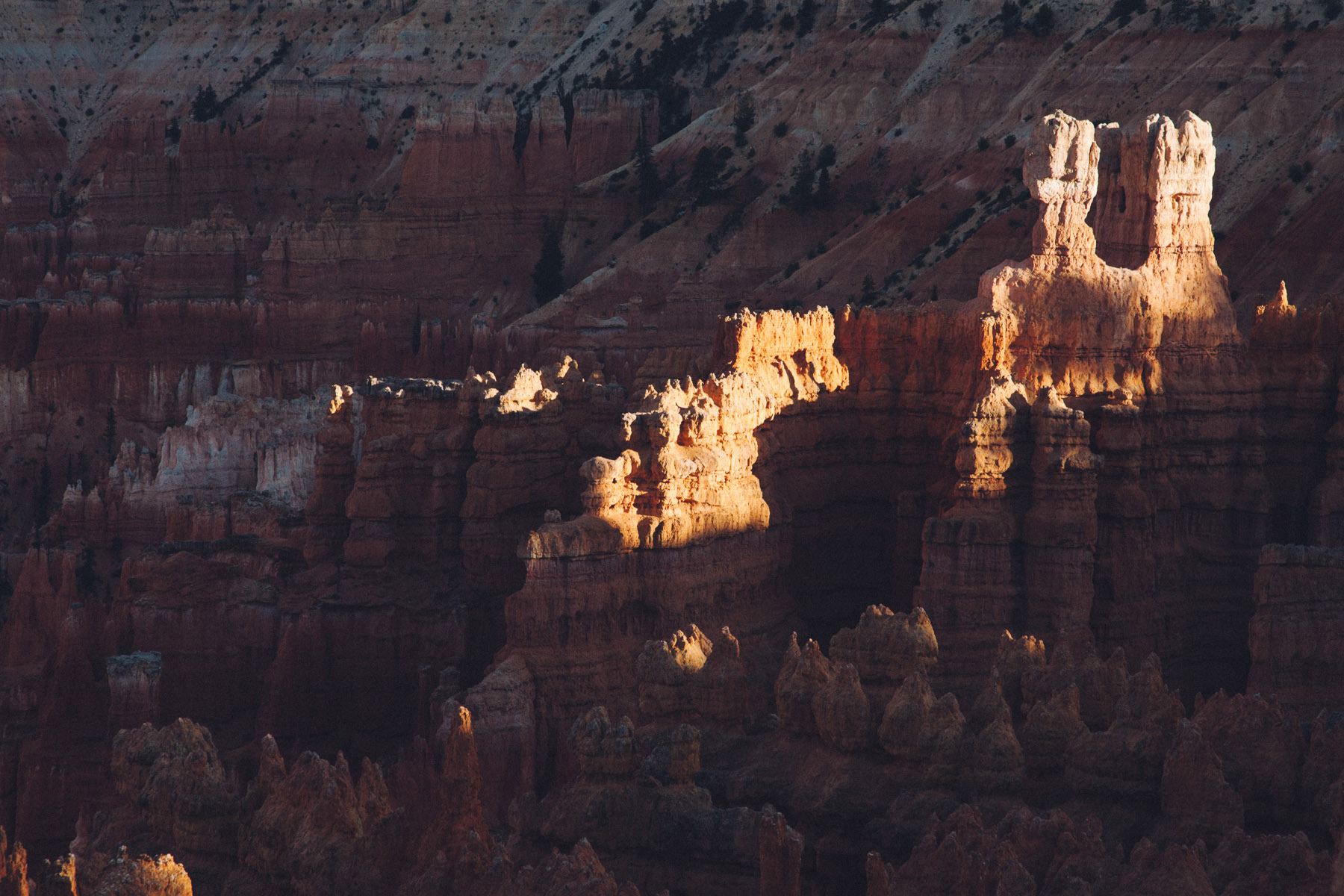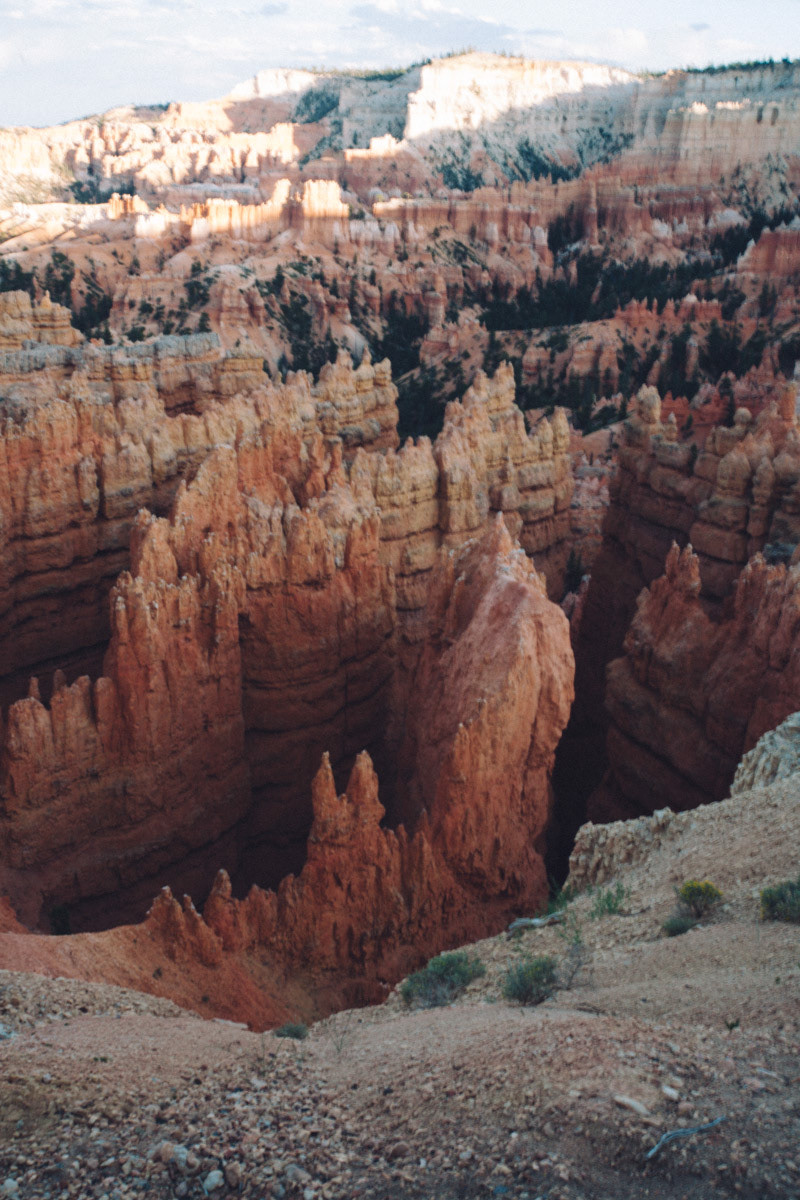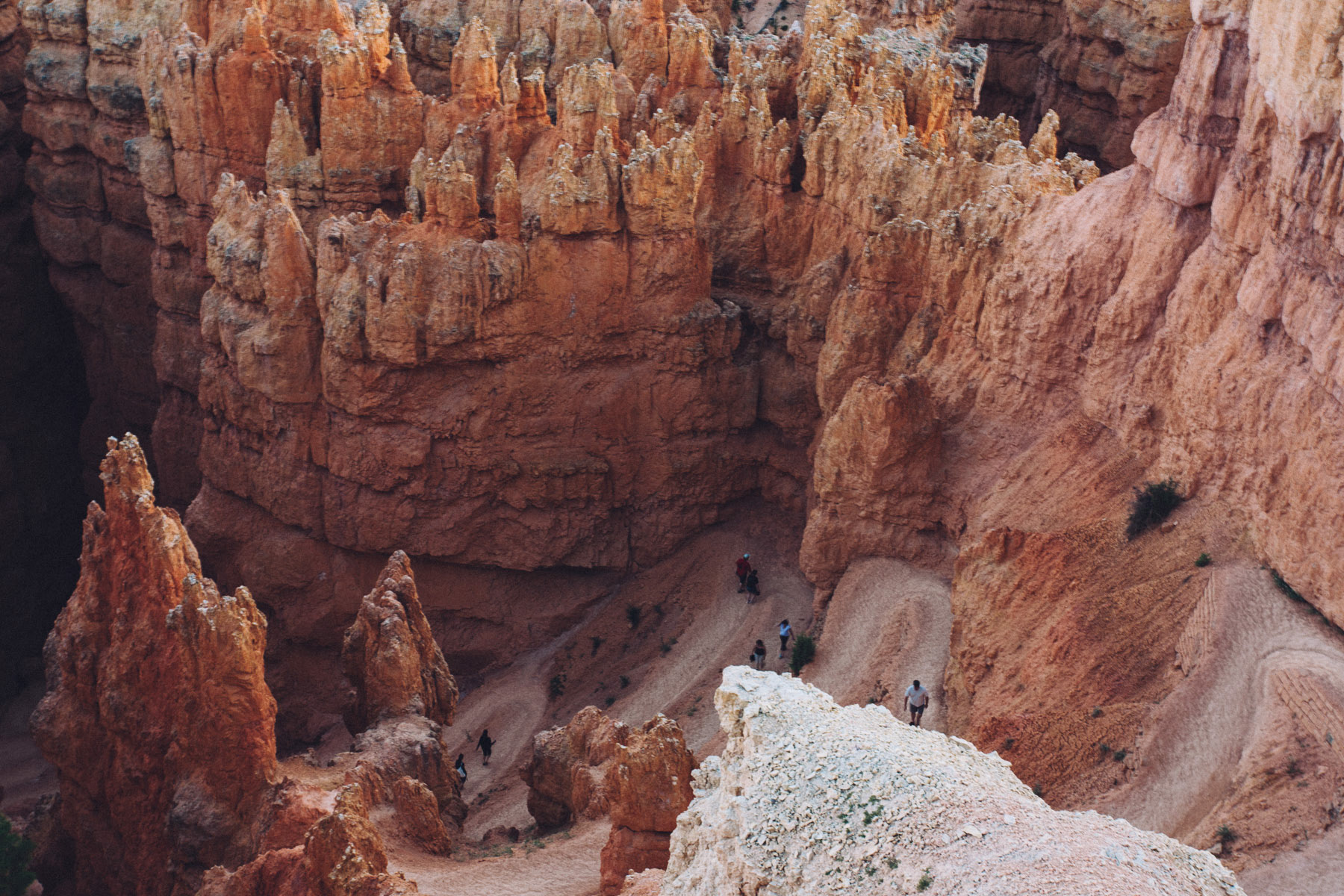Day 10: From Arches to Bryce Canyon
Sunday, July 12th, 2009
After an entire day spent at the amazing Arches National Park, the plan for the 10th day of our cross country road trip was to drive through southern Utah, from Moab all the way to the Ruby's Inn Best Western hotel, located right at the entrance of the Bryce Canyon National Park.
This turned out to be a very scenic drive near the Goblin Valley State Park, through the Capitol Reef National Park and bordering the Dixie National Forest.
While we didn't have enough time to visit all the parks we drove near, this drive gave us the opportunity to experience amazing views and sample the beauty of this fascinating part of Utah.









Factory Butte is the most recognizable feature of a large area of stark, barren land either side of the Fremont River known as the Upper Blue Hills. This may appear a desolate piece of land, but for a guy with a camera and a 4x4, this is a great place to visit.


Rock art figures created by ancient Native Americans can be seen in several places in Capitol Reef National Park. Most are attributed to the Fremont Culture, which existed in areas of Utah from approximately AD 600 - 1300. Very impressive petroglyph figures can be seen along a sheer cliff that parallels Hwy 24 just east of the Visitor Center in Capitol Reef. The figures cover several rock panels and the diversity of images is astonishing.
The rock art is a must-see attraction along the main highway through the park. Another rock art panel can be seen in Capitol Gorge, and there are more rock art figures in some backcountry areas.






After a short detour to reach the town of Bicknell, UT to grab a quick sandwich, we followed Hwy 12 south, climbing up to altitude 9000 ft, through the Dixie National Forest, surrounded by colonies of aspen trees. While we were stopped in a parking area to enjoy the view, a large family of people who were traveling in two separate cars going in the opposite direction, stopped as well. They sat down on some boulders while the children were running around the fields. An old man started telling the story of when the meadows lying in front of us had no trees and were covered with sheep and cattle. These days, instead, large colonies of aspen tree have spread across the meadows.
Aspens typically grow in large clonal colonies, derived from a single seedling, and spread by means of root suckers; new stems in the colony may appear at up to 30–40 m (100–150 ft) from the parent tree. Each individual tree can live for 40–150 years above ground, but the root system of the colony is long-lived. In some cases, this is for thousands of years, sending up new trunks as the older trunks die off above ground. For this reason, it is considered to be an indicator of ancient woodlands. One such colony in Utah, given the nickname of Pando, is estimated to be 80,000 years old, making it possibly the oldest living colony of aspens. Some aspen colonies become very large with time, spreading about 1 m (3 ft) per year, eventually covering many hectares. They are able to survive forest fires, because the roots are below the heat of the fire, with new sprouts growing after the fire burns out.
Aspens do not thrive in the shade, and it is difficult for seedlings to grow in an already mature aspen stand. Fire indirectly benefits aspen trees, since it allows the saplings to flourish in open sunlight in the burned landscape. Lately, aspens have an increased popularity in forestry, mostly because of their fast growth rate and ability to regenerate from sprouts, making the reforestation after harvesting much cheaper, since no planting or sowing is required.
In the late afternoon, we finally reached out destination. After having settled in our comfortable hotel room at the Ruby's Inn, we drove a few miles south into the Bryce Canyon National Park, to reach Sunset Point and take some pictures.
There is no place quite like Bryce Canyon. The major feature of the park is a collection of giant natural amphitheaters along the eastern side of the Paunsaugunt Plateau. Bryce is distinctive due to geological structures called hoodoos, formed by frost weathering and stream erosion of the river and lake bed sedimentary rocks. The red, orange, and white colors of the rocks provide spectacular views for park visitors. Bryce sits at a much higher elevation than nearby Zion National Park. The rim at Bryce varies from 8,000 to 9,000 feet (2,400 to 2,700 m).








Surrounded by the beauty of southern Utah, these hoodoos are said to cast their spell on all who visit. The Paiutes, who lived in the region when Euro-Americans arrived in southern Utah, tell the story of the Legend People, who were notorious for living too heavily upon the land. They would drink up all the streams and rivers in the spring so there would be no water left for all the other creatures come summer. They would also eat all the pine nuts so there would be none left for the other animals to eat to help them survive the winters. All the other animals and all the other creatures complained about how rude they were and how reckless they behaved. And they finally got the attention of the powerful god, Coyote.
Coyote then invited all the Legend People to a banquet and promised them enough food to be able to eat all day long. So, of course, they came dressed in their finest, most-colorful clothing and in their most elaborate war paint, and they sat down to Coyote's great big banquet table. But before anyone could take a single bite, he cast a spell on them that turned them to stone. The Legend People tried to flee up over the top of the canyon rim, and in so doing you see them trampling on top of each other trying to escape over the edge of the canyon. And so here they stand to this very day stuck like rocks.
You can hear this legend in more details narrated by Kevin Poe, the chief of interpretation at Bryce Canyon, on NPR.org.











